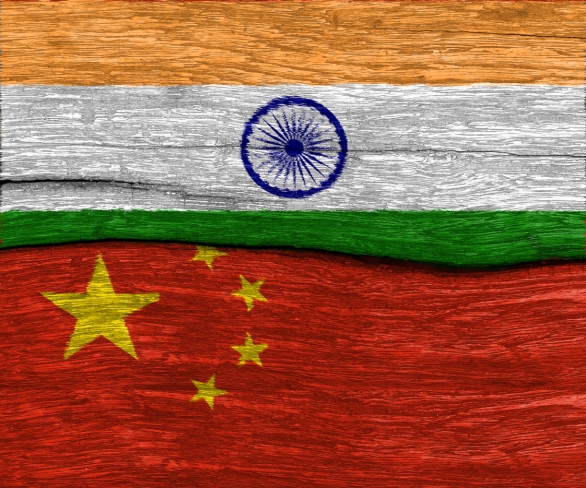
The Economist Intelligence Unit predicts different trajectories for the world’s two most populous countries
In its annual lookahead to global affairs, The World in 2018, The Economist pointed out three main themes: Lack of synchronicity in global growth; higher interest rates still a way off; and downside risks from China and U.S. from 2019 onwards.
“2017 was a pretty good year, a lot of countries did pretty well,” says Simon Baptist, Global Chief Economist at The Economist Intelligence Unit, pointing out the turnaround in Europe and Japan, and China’s gentler-than-feared slowdown. “Moving into 2018 it’s not looking quite so good. Some countries are just at the beginning of their business cycles...[while other countries] are coming to the end of their peak.
“Places like Russia and Brazil have been fighting recessions over the past couple of years, South Africa is still in recession. But all those economies should continue emerging from recession in the first half of 2018. They’re still at the beginning of their business cycles and there should be a long period of economic recovery and expansion.”
On the opposite end of the spectrum are the U.S. and China where “the next recession is closer than the last one was” according to Baptist, who spoke at the recent SMU Library talk, “2018: Who will be the Winners and Losers?”
“The U.S. is running at a new normal of a 2 percent growth rate,” Baptist elaborates. “The U.S. recovery started seriously about four years ago. Since then it has been growing at about two percent, job creation has been strong; it’s continued under Trump.”
China: Year of the Dog’s life?
Baptist cites the recent U.S. tax reforms as a positive for the economy – “Some companies will see their taxes increased, some will see a decrease but the overall burden will be more evenly distributed” – but cautions that 2018 could bring misery for China.
“The slowdown I’m expecting in China is going to be focused on the investment sector,” Baptist explains, highlighting the corporate debt that is likely to be unpaid and the consequent bank cutbacks in lending to repair balance sheets. “As banks lend less, it’s going to be harder for businesses to get access to funding, and we expect to see investment in China to come down as a result.
“While it’s a problem, chances are the Chinese government will be able to control what happens. China has a good track record of dealing with transitions, and it’s likely they will do so again this time. China’s banking system is not the same as that in, say, the U.S. and Europe where things can be market-led; everything in China is state-led. The government has all the levers to engineer a controlled slowdown instead of being at the mercy of changing sentiment or market forces.”
He concludes: “But there is some chance – a 25 to 30 percent chance – that they are unable to control all of what happens. Let’s say the debt situation is worse than thought, or three or four medium-sized Chinese banks run out of cash, then that would lead to a loss of confidence in the Chinese banking sector and subsequent reduction in consumer spending.”
India: BJP dominance ensures policy and economic coherence
Baptist expresses optimism for Asia’s other behemoth, India, which has “the same fundamentals as China: A few hundred million people in very low productivity occupations, subsistence jobs, or are not in the formal economy.” Citing well-known productivity gains associated with urbanisation and industrialisation, Baptist points out that “it doesn’t require magic to get more productivity out of India”.
“But India has always got that potential, so what makes things different now?” he asks. “The answer: politics. The political scene is less fragmented than before. The BJP now controls both the presidency and parliament. It’s the first time in 35 years that one party has the majority in the Lower House, and they are on track to secure a majority in the Upper House as well. There are also more states that are under the control of the BJP, as well.
“There have been some important things that have happened. The financial regulations have made the banking system more robust. The central bank is run more effectively. The Goods and Services Tax has harmonised taxes across Indian states, making India more of a national market.”
While India lack an authoritarian Chinese Communist Party-style regime to ram policies through, Baptist expects “seven to nine percent growth in the next five years, and five to six percent after 2030”. The more interesting difference, Baptist notes, lies in India’s route to high-income nation status.
“India’s growth…will be services-driven rather than manufacturing-driven. I don’t think India will become a manufacturing powerhouse the same way that China did. It’s going to be a services powerhouse.
“There is an interesting question around economic development about that. A place like India – and we’d put the Philippines into the same basket – is trying to go from lower- to middle-income status, and to higher-income thereafter through the services sector. To date, every country has done it through the manufacturing route. From the industrial revolution in Europe to Japan in the 50’s, then South Korea, Hong Kong, Singapore, Malaysia etc. have done it through manufacturing.
“There is an open question: Can services deliver the same level of productivity growth? Can services deliver the same level of jobs creation needed to draw all those migrants from rural areas? How vulnerable is the services sector to things like automation and robotics?”
Follow us on Twitter (@sgsmuperspectiv) or like us on Facebook (https://www.facebook.com/PerspectivesAtSMU)
Last updated on 30 Jan 2018 .

